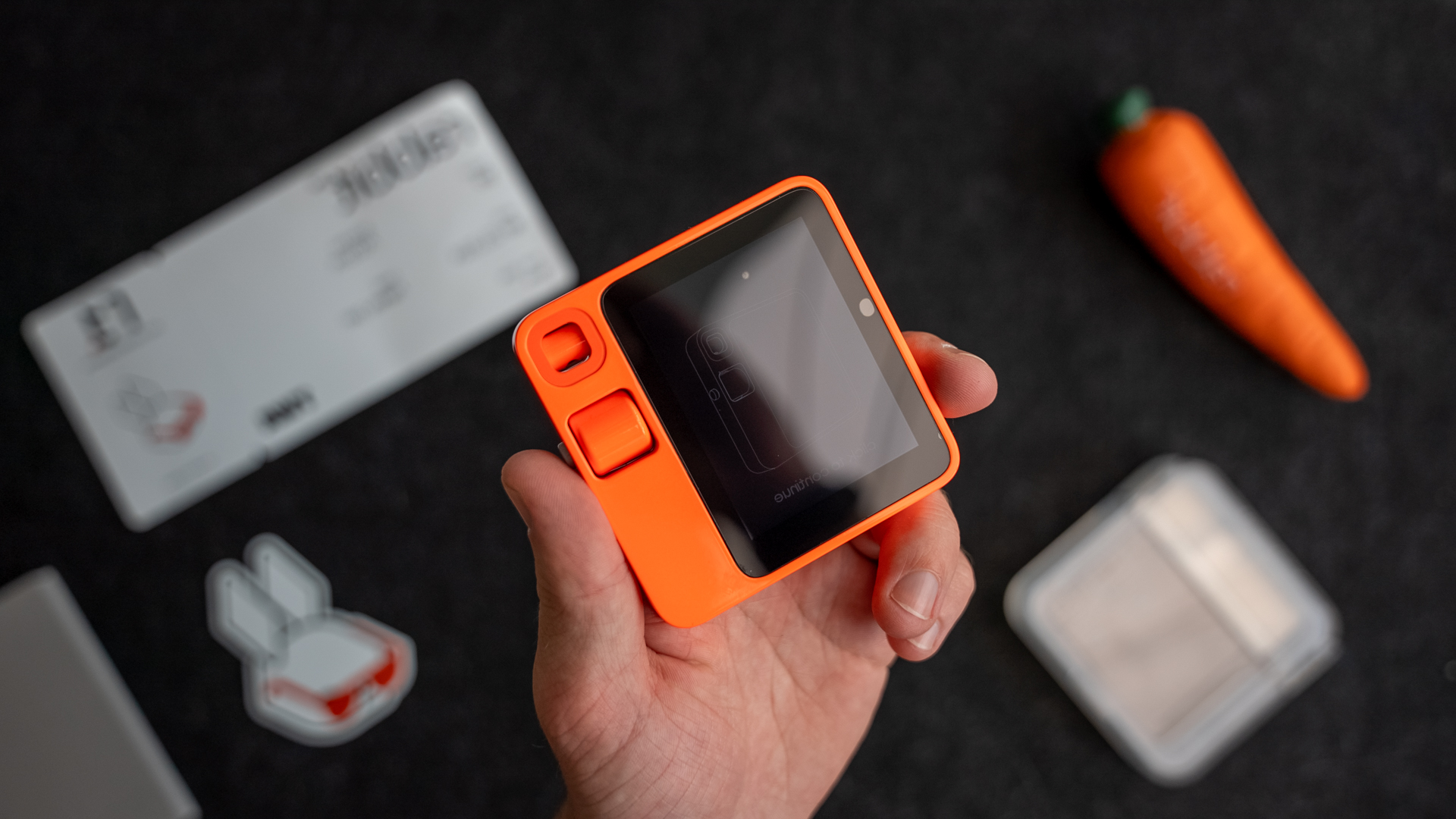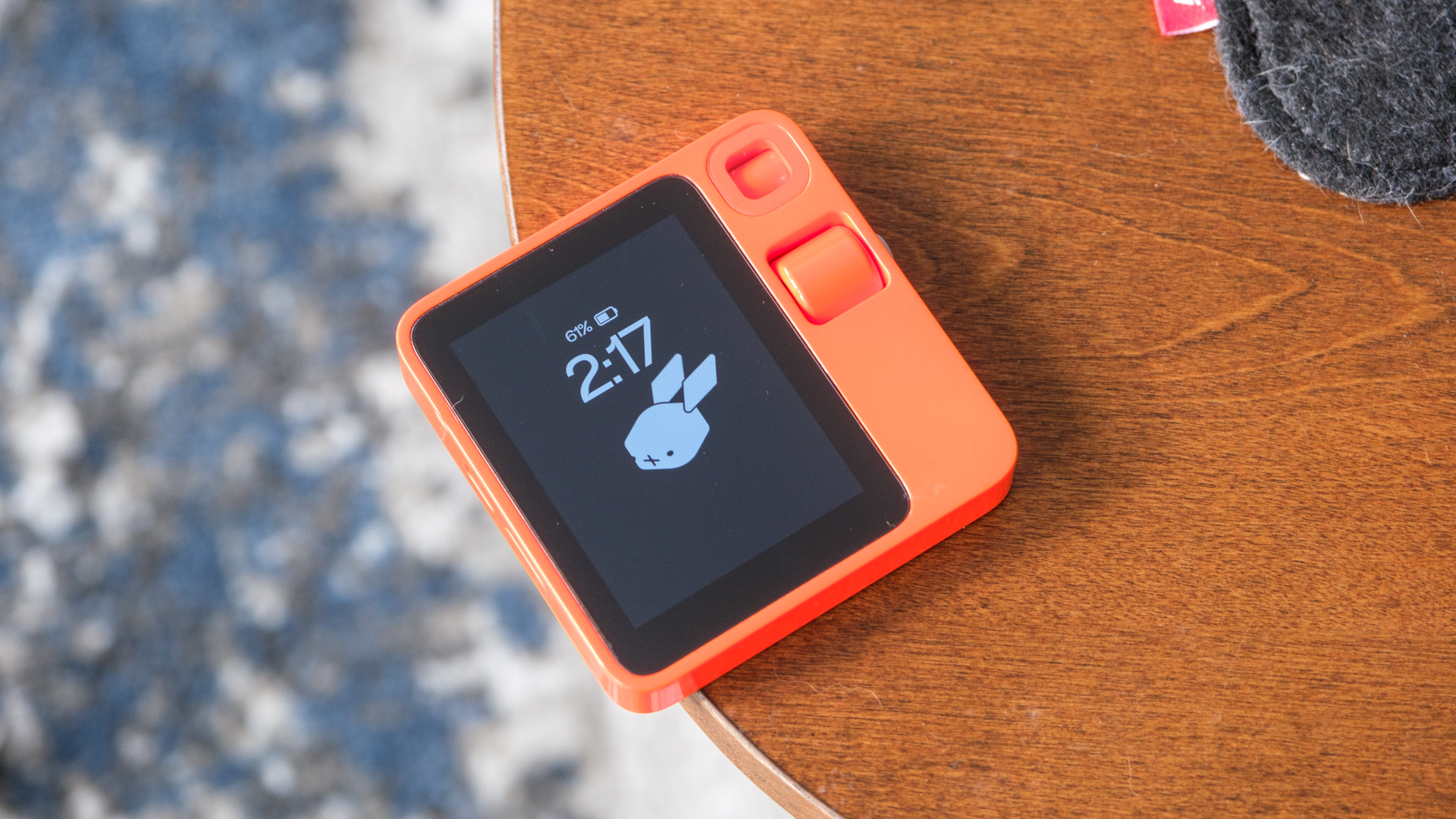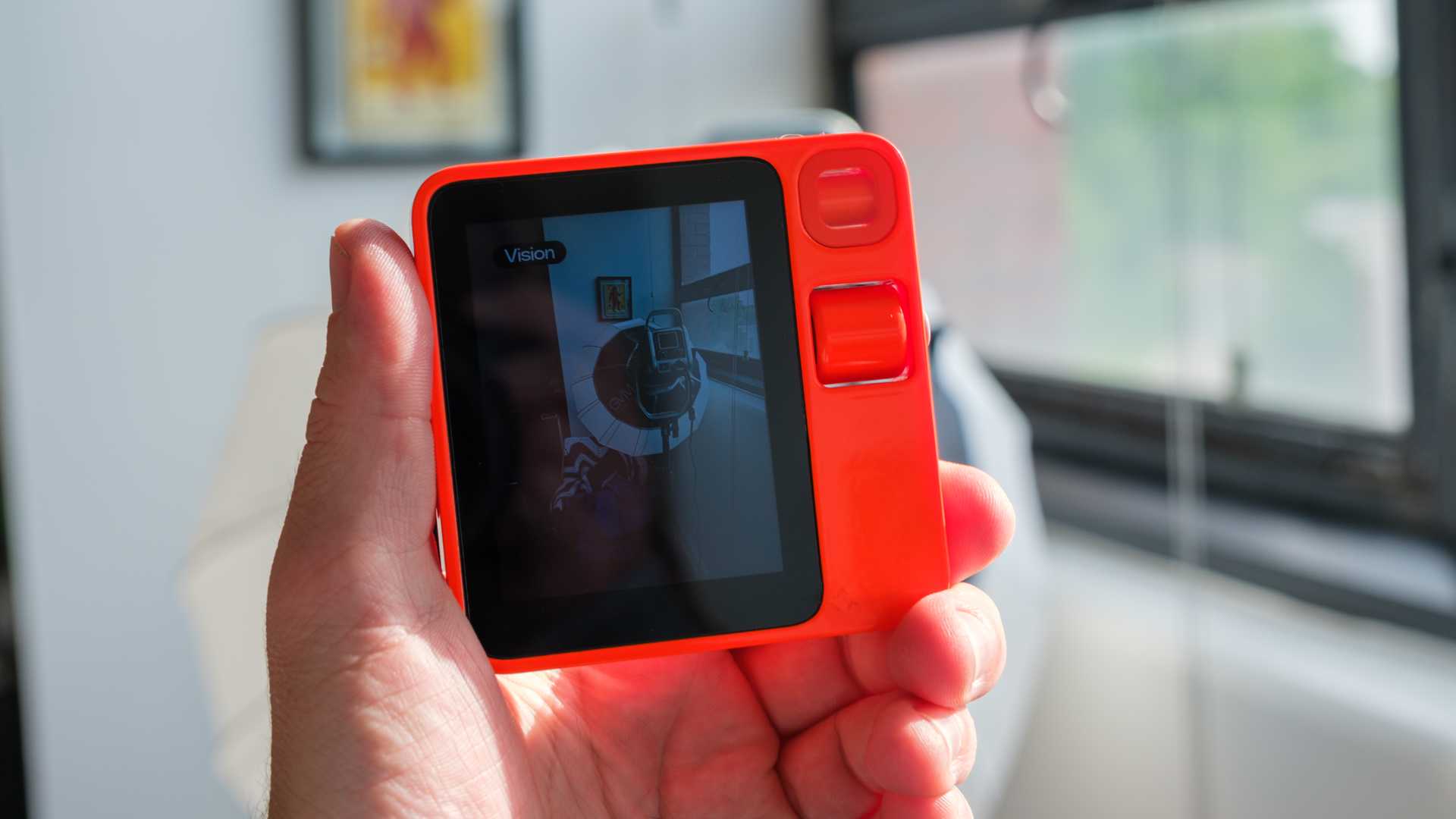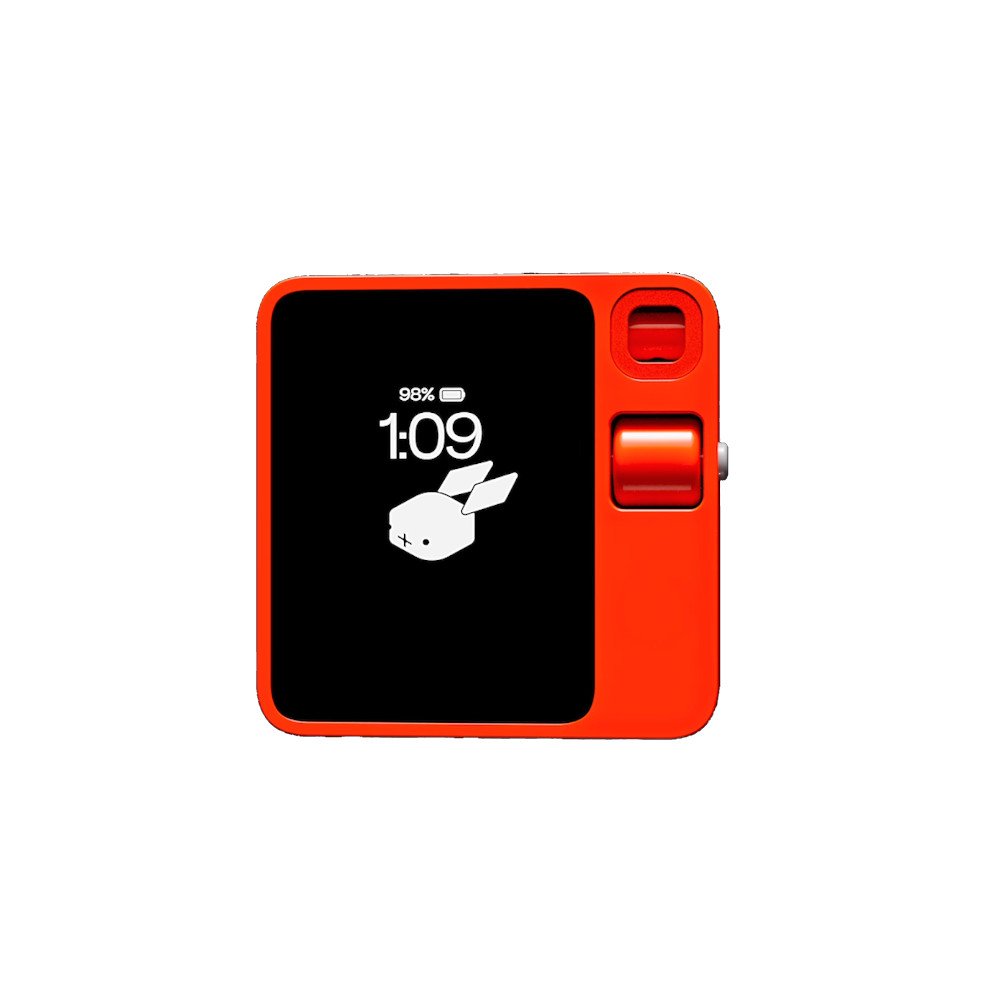
Ryan Haines / Android Authority
There’s a new AI-powered device in town, and this one comes in orange. Hot on the heels of the Humane Ai Pin, Rabbit has officially launched its debut R1 companion, and I was among the first to pick ours up at the company’s sold-out event at New York’s TWA Hotel. With a brand-new Rabbit OS under the hood and Teenage Engineering’s fingerprints all over the quirky Leuchtorange case, the R1 is about as opposite from its chest-mounted rival as can be.
One day is hardly enough time to put Rabbit’s Large Action Model through its paces, but it’s enough time for me to pick out a few first impressions, so let’s venture down the rabbit hole.
What is the Rabbit R1?

Ryan Haines / Android Authority
Let’s be clear: the Rabbit R1 is not an Android phone. It’s not meant to look exactly like a phone, nor is it meant to replace one. Instead, it’s a pocket-sized partner for your phone with a funky little design to match. As mentioned above, the hardware was co-designed with the minds at Teenage Engineering, so it’s industrial yet futuristic, and I love the look. Rabbit’s team explained that part of the design is directly inspired by the OG pocket companion, the Tamagotchi, and I can immediately see where they’re coming from.
As a $199 device, the entirety of the R1 is made of plastic, and it currently comes in a single Leuchtorange finish. It’s just about the right size for the palm of my hand, though I do wish there was a matte option, as the current glossy plastic is a fingerprint magnet. If I had to compare the R1 to another device (which I do since it’s a complicated little companion), it feels like a fidget toy. It uses a rotating crown and push-to-talk button as the main controls, providing just enough audible feedback while navigating the 2.88-inch display. The R1 also has a pair of top-mounted microphones, a rear-firing speaker, and a SIM tray next to its USB-C port for you to insert an LTE-enabled nano-SIM.
Rabbit’s R1 is inspired by none other than the OG pocket companion: The Tamagotchi.
There’s precious little else to touch on when unboxing the Rabbit R1 since you get almost nothing in the box. The companion itself comes in a clear plastic carrying case inspired by cassette cases of old, and that’s it. You don’t get a charger, nor do you get a USB-C cable, so you’ll need to keep one at the ready. Luckily, we have a few trusty favorites that we recommend.
I don’t mind the lack of charging accessories since you probably already have a compatible cable from another device, but my more significant concern is how lefties might fare while using the R1. Although the rotating crown and push-to-talk button are centrally located, Rabbit’s 360-degree rotating “eye” sits above them when used right-handed, which means it would sit below them for left-handed users — right in front of the palm of your hand. I’m sure a fix is as simple as adjusting your grip, but you don’t usually have to worry about blocking your phone’s cameras when using your non-dominant hand.
So, uh, what does it do?
Like most AI-powered companions, Rabbit’s software is still in its earliest days. The overall R1 experience is pretty bare-bones right out of the box, offering a total of nine functions ready to go from day one — each of which is almost identical to what your smartphone can already do and is a little bit more of a headache to set up.
Before we get to the specific functions, we have to talk about the Rabbit Hole. Essentially, this is the hub where you’ll control all your R1 integrations. You’ll need an account to set up the companion, and then you’ll use the Rabbit Hole platform to log into apps one at a time. It’s also where you’ll access Rabbit’s Teach Mode, but that’s a topic for once we’ve had more time with the device.
You can stream music, order a ride, or get dinner delivered… but only with a select few apps.
Mentioning apps, that’s a good place to start. Currently, the R1 supports music playback, ridesharing, and food delivery through Spotify, Uber, and Doordash. However, it only supports those apps — you can’t choose Lyft, Tidal, or even Uber Eats instead. There are also integrations for generative AI images through Midjourney and up-to-date searches with Perplexity, though you’ll still need the Rabbit Hole to receive your results for the former.
As for the non-integration features, the main draws for Rabbit’s R1 are bidirectional translation and voice recordings with automatic AI-generated summaries. You can also use the rotating camera to identify objects and scenes in front of you, though the quality of results tends to vary based on lighting conditions.
Oh, and pretty much none of these features happen on-device. Instead, the Rabbit R1 runs on MediaTek’s Helio P35 chipset, which is just powerful enough to keep it in contact with data centers where the heavy lifting is done. As such, the R1 needs a constant data connection (either via Wi-Fi or LTE with a data plan) to be helpful.
Do I feel like I need the R1 yet?

Ryan Haines / Android Authority
I’ll readily admit that I went into Rabbit’s R1 pickup event taking everything with a pretty big grain of salt. After all, we just finished watching Humane’s Ai Pin get torn for everything from speed to battery life to running uncomfortably warm on your chest. And yet, it’s hard to argue with CEO Jesse Lyu’s enthusiasm for this phone not-replacement. Lyu demonstrated all of the R1’s day one features in front of us, a live audience comprised primarily of community members with a few media outlets sprinkled in. The results, as he showed them, were pretty impressive, too.
Tucked away on the lower level of the TWA hotel, a spot with notoriously bad cell reception, he was able to ask the R1 a series of questions, receive quick answers, and flex a little bit of muscle with the app integrations. Lyu jumped from song to song on Spotify, ordered Mcdonalds to his friend’s address, and set up an Uber ride that the rest of the team hurried to cancel before the driver arrived. We, of course, never actually saw the McNuggets arrive, nor did we see the driver pull up to pick up passengers, but the interface ran smoothly for the most part.
All of Rabbit’s demos looked promising… but there’s still a learning curve.
Then, it was time to pick up our units and head home for the night, which meant a chance to try some of the integrations ourselves. A fellow journalist beat me to the punch while setting up their Uber account, so I got to sit and watch as the ridesharing app demanded the most complicated Captcha I’ve ever seen, followed by several failed attempts to order a car to the hotel.
While the R1 had no problem identifying her voice command, locating a car, and setting a price, it repeatedly failed to finish confirming the ride and dispatch the driver. Perhaps the process would have been smoother if we had more time between setup and real-world testing, but downloading and opening the Uber app (or Lyft, if you prefer) on your phone doesn’t come with the same set of issues.
So, I’ve seen the R1 shine, and I’ve seen it stumble, and it’s left my opinion of AI companions pretty much unchanged from where it started. Yes, Rabbit’s R1 is pretty cool when it works, and I can’t deny that Teenage Engineering has some of the best designers in the game, but I struggle to find a good answer when someone asks me why this isn’t just an app. Honestly, I’ve yet to find a situation where I’d truly rather fish this phone-like gadget out of my pocket to complete one of its relatively limited functions when I already have my phone that has far more features at my disposal.
Would you buy the Rabbit R1?
0 votes
But who knows, maybe I’ll come back to eat my words and love going through life with a scroll wheel and sending everything to the Rabbit Hole. We’ll see!
If you’re interested in an AI companion of your own, you can pick up the R1 (with a rather lengthy shipping delay) below. And while you’re here, let us know what you think. Do you feel like the Rabbit R1 is a useful companion to your phone? Or does it overlap too much with existing assistants?

Rabbit R1
Lightning-fast responses • Eye-catching design • Approachable price
Push-to-talk AI computing
Powered by Rabbit OS, the Rabbit R1 is a compact personal assistant with a custom personalized operating system and a natural language interface. Enjoy voice-powered AI computing by allowing the R1 to interact with websites on your behalf.










